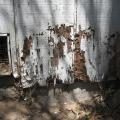7 Ways to Protect Your Home from Fall Weather
As the days get shorter and the temperatures begin to drop, fall weather can put your home to the test. Cooler air, more frequent rain, and gusty winds can all lead to potential issues if your home isn’t prepared. But with a little effort, you can protect your home and keep it cozy and safe all season long. Plus, taking the time to safeguard your property can help you secure better homeowners insurance quotes by reducing the risk of potential claims. Here are seven ways to protect your home this fall.
Seal Gaps and Cracks
In the fall, the tiniest openings in your home can let in cold air, moisture, and even pests looking for a warm place to hide. Sealing these gaps and cracks can keep your home warmer and drier and save you money on energy bills.
Start by inspecting the areas around your windows and doors and use weatherstripping to ensure a tight seal that prevents drafts. For cracks in your walls or foundation, apply caulk or sealant to fill them in. Doing this keeps the cold out and protects your home against water infiltration, which can lead to mold and mildew growth.
Also, don't overlook your attic and basement. Seal any gaps around pipes or ducts that pass through the floor, walls, or ceiling. Ensure the access hatch is properly weather-stripped and insulated in the attic.
Clean Gutters and Downspouts
Gutters can quickly become clogged as trees shed their leaves. If left unchecked, water can overflow and cause serious damage to your roof, siding, and foundation. Clogged gutters can also be a breeding ground for pests and mold, which can cause health issues and further home damage.
To avoid these problems, grab a ladder and some gloves and clear out all the leaves, twigs, and gunk from your gutters. After they're clean, run some water through to make sure it flows smoothly into the downspouts. It's also important to check the downspouts, as they can get blocked and cause water to pool around your home's foundation.
If you spot any cracks or sagging in your gutters while you're up there, take care of those repairs right away. You might also want to consider adding gutter guards to minimize future maintenance.
Inspect Your Roof
Your roof is your home’s first line of defense against the elements, and any damage or wear can lead to big problems once the autumn rains and winds set in.
Start by doing a visual inspection from the ground. Look for any missing, damaged, or curling shingles, as these can allow water to seep into your home. Also, pay attention to any sagging areas or dark spots that could indicate leaks or structural issues.
If you’re comfortable with heights, climb up and get a closer look at the areas around vents, chimneys, and skylights, as these are common places for leaks. Additionally, check that the flashing — the metal that seals these areas — is in good shape. While you’re up there, clear away any leaves or branches that might have piled up.
If you notice anything that doesn't look right or are unsure about your roof's condition, you should call a professional roofer to conduct a thorough inspection.
Check Your Heating System
Before the cold really sets in, take some time to check that your heating system is ready to keep you warm all season long. Start by turning on your furnace or heater to see if it’s running smoothly. If it’s making strange noises, taking a long time to heat up, or doesn’t seem to be working as efficiently as it should, it’s a good idea to get it serviced.
You should also change or clean your air filters if you haven’t done so recently. Dirty filters can restrict airflow and make your system work harder, leading to higher energy bills and potential breakdowns.
Don’t forget to inspect your vents and ducts, as well. Make sure they’re clear of dust and debris so warm air can circulate efficiently throughout your home. If you notice cold spots in certain rooms, you may need to clean your ducts or there could be an issue with your system.
Install Storm Windows
Storm windows add an extra layer of insulation, keeping the warmth inside and the chilly air out, which means lower energy bills and a cozier home as the weather cools down. Besides keeping your home warm, storm windows can also cut down on outside noise and offer a bit of extra security.
Installing storm windows is usually pretty simple, as they fit right over your existing windows. Some are easy to remove if needed, while others can stay up year-round, depending on what works best for you.
Protect Pipes from Freezing
When pipes freeze, they can burst, leading to major water damage and costly repairs. Taking a few steps now to protect your pipes can save you a lot of trouble later on.
First, insulate any exposed pipes, especially those in unheated areas like basements, attics, garages, or crawl spaces. Just wrap it around the pipes, and you’ll help keep them warm enough to prevent freezing.
For outdoor faucets and hose bibs, disconnect and drain any garden hoses, then shut off the water supply to these fixtures if possible. Once the water is off, open the faucet to drain any remaining water. You can also cover outdoor faucets with insulated covers to add an extra layer of protection.
On really cold nights, you might want to open the cabinet doors under your sinks to let warm air circulate around the pipes. If you're worried about a deep freeze, consider letting a small stream of water run from faucets connected to exposed pipes since a little running water can help prevent pipes from freezing.
Review Your Home Insurance Policy
While it might not be the first thing that comes to mind when preparing for the season, reviewing your home insurance coverage can save you a lot of stress and financial strain if something unexpected happens.
If it’s been a while since you last reviewed it, don’t hesitate to contact your insurance agent. They can help clarify your coverage and recommend any necessary adjustments to protect your home this fall. If your current policy doesn't provide adequate protection or is too expensive, consider getting new home insurance quotes to find a policy that suits your needs and budget.
Whether you're a seasoned homeowner or new to the game, these tips will help protect your home from whatever fall weather throws your way.
More to Read:
Previous Posts:








